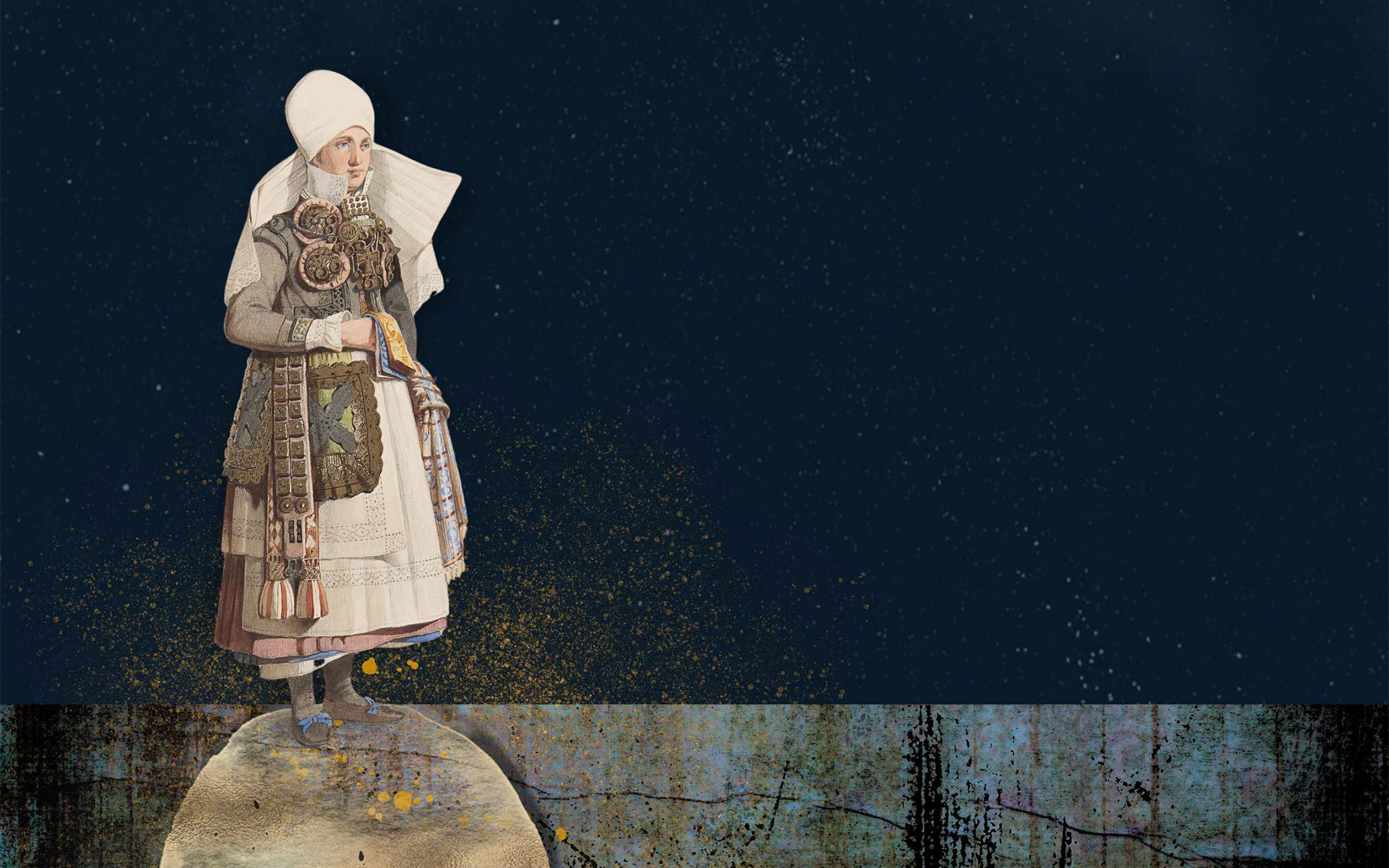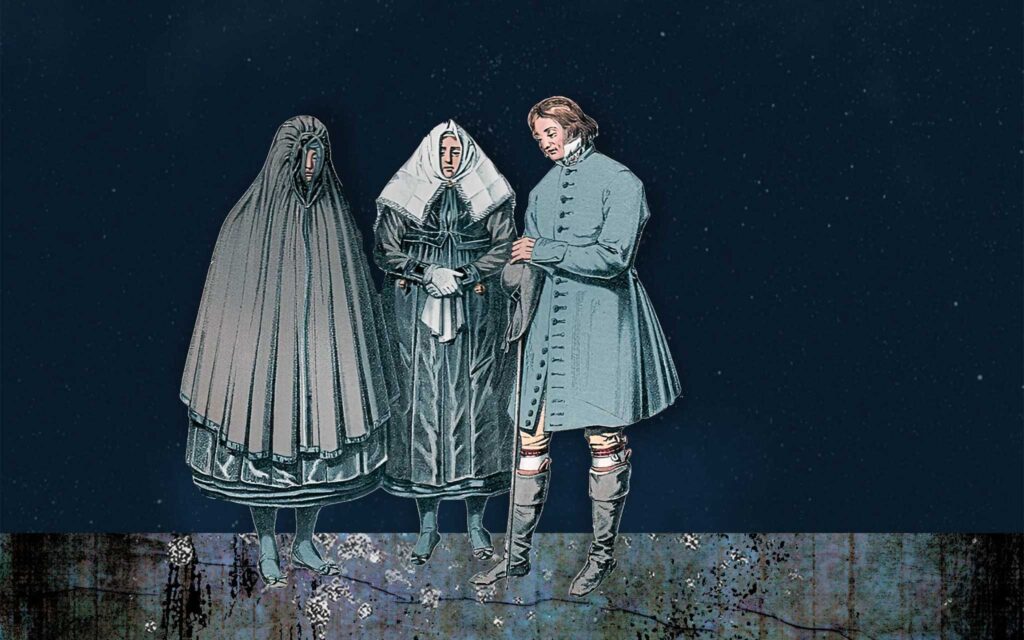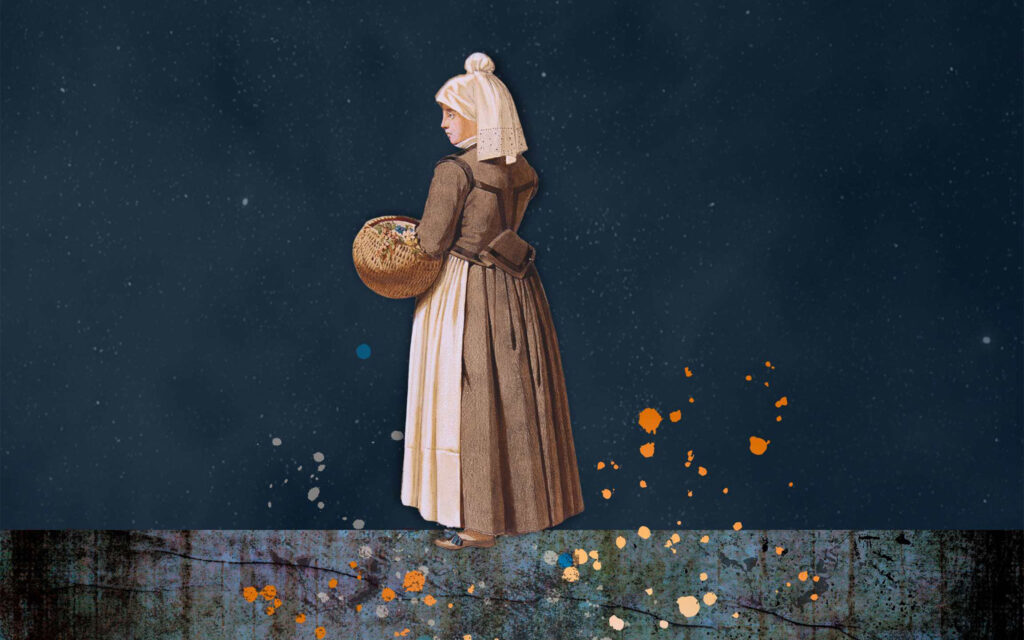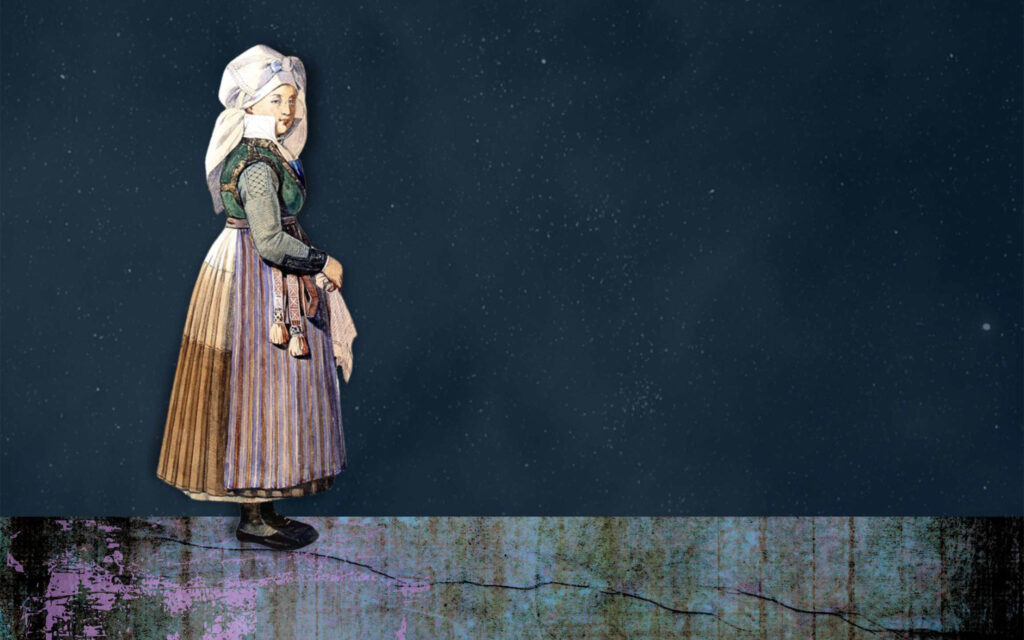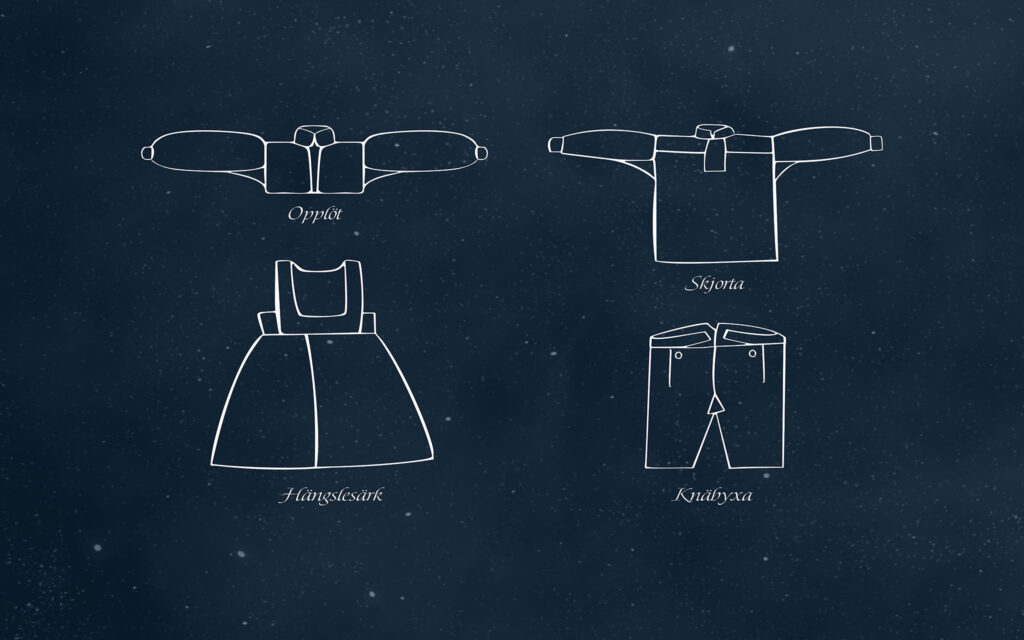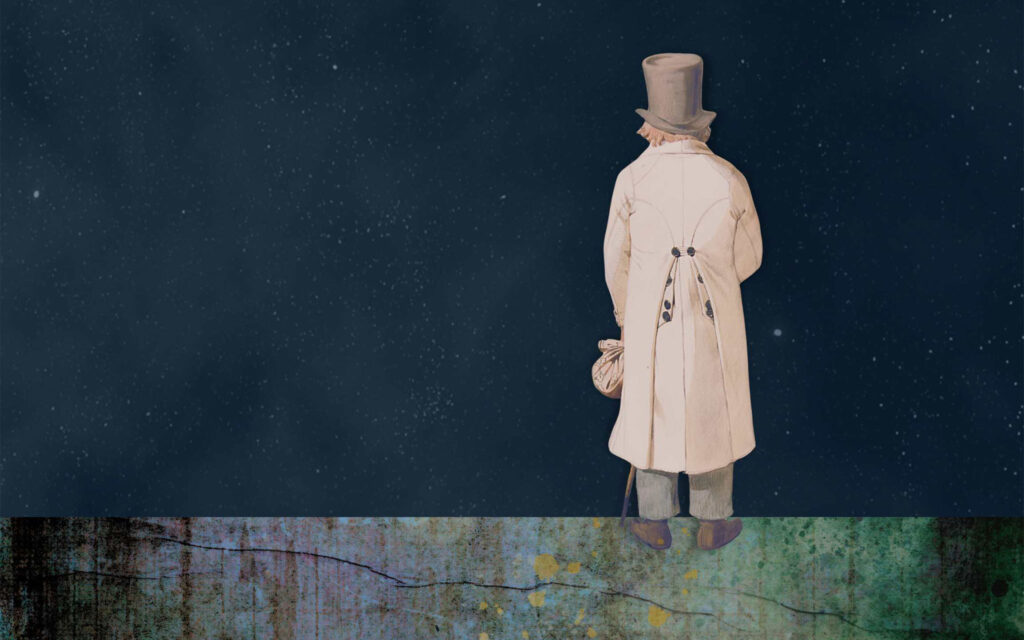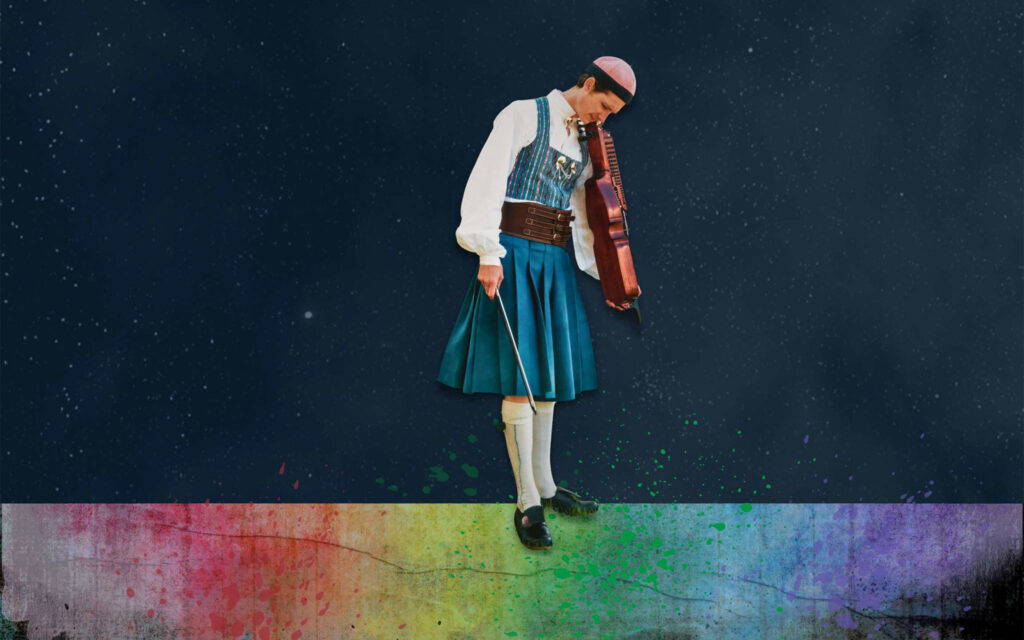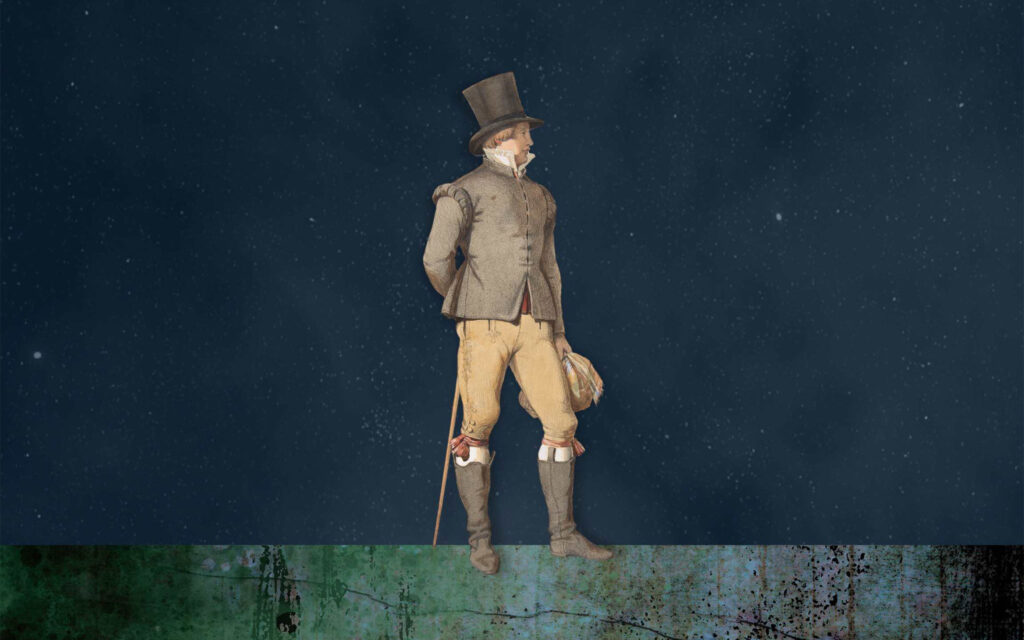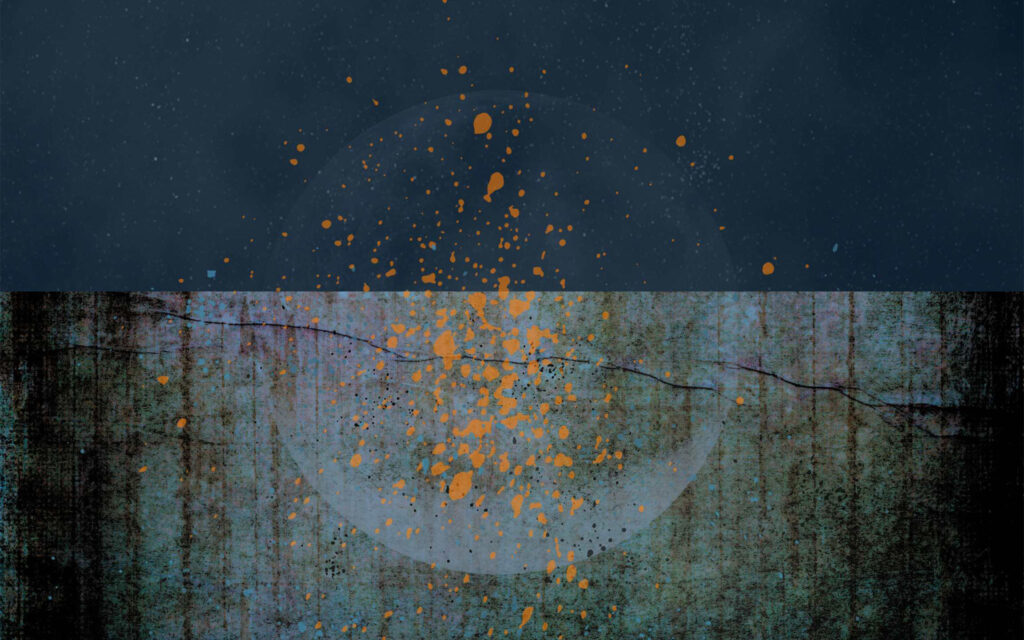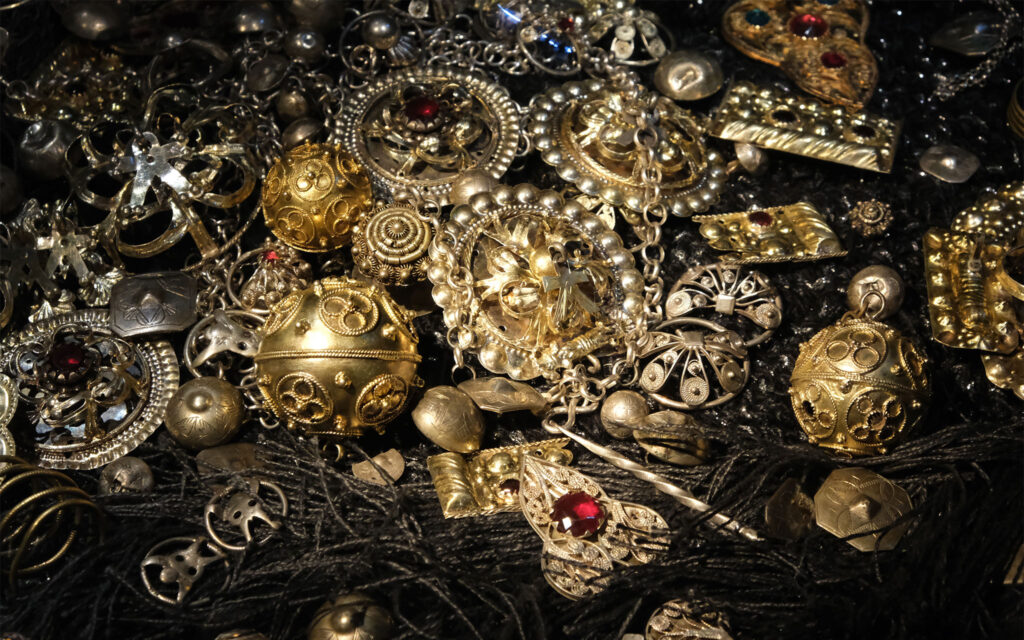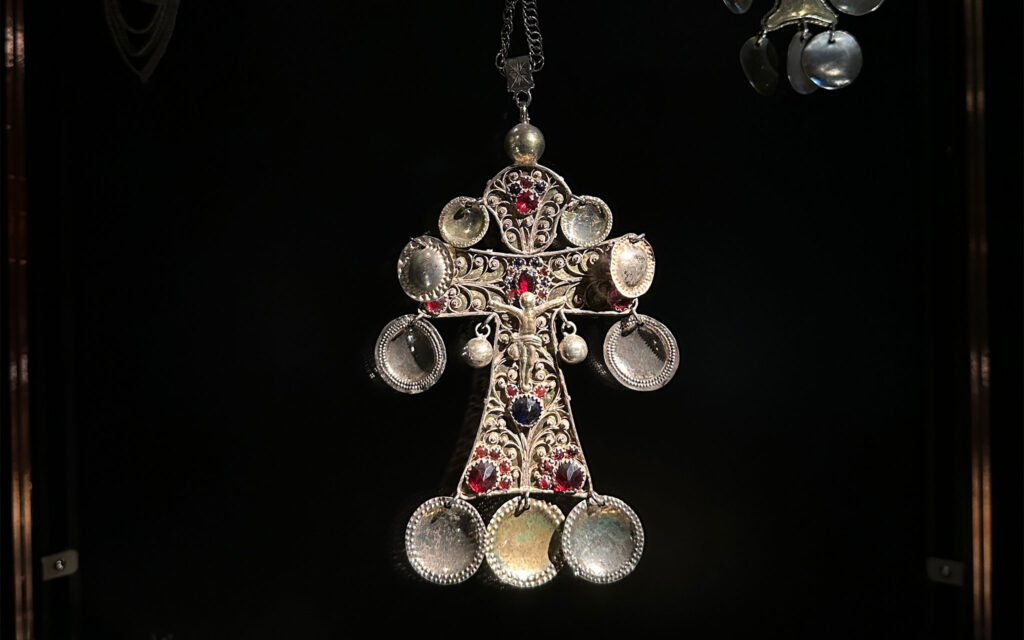(Exhibition text in English, referring to a QR code in the exhibition)
Dressing the bride could take so long that it was done the evening before the wedding – she then slept sitting in a chair. Weddings were an opportunity to display the farm’s wealth. If one lacked bridal silver, it was borrowed from relatives and neighbours. In north-western Skåne, some brides wore so many borrowed crosses that they could hardly dance.
The bride from Göinge in north-eastern Skåne is dressed according to drawings by Nils Månsson Mandelgren (1813–1899). The jacket’s shoulder seams and silver ornaments show clear Renaissance influences.
Baptism was highly important. The godmother carried the swaddled child in a christening wrap or pouch, often made from reused silk. The christening cap, sewn from saved or donated fabric scraps, indicated whether the child was a girl or a boy.
Fabrics were reused, just like bridal silver, which could be melted down and made into new or more fashionable jewellery. One example is the gilded necklace in the display case opposite the undergarments. It was acquired for a wedding in 1835 and modernized twenty years later to better suit bourgeois taste.
